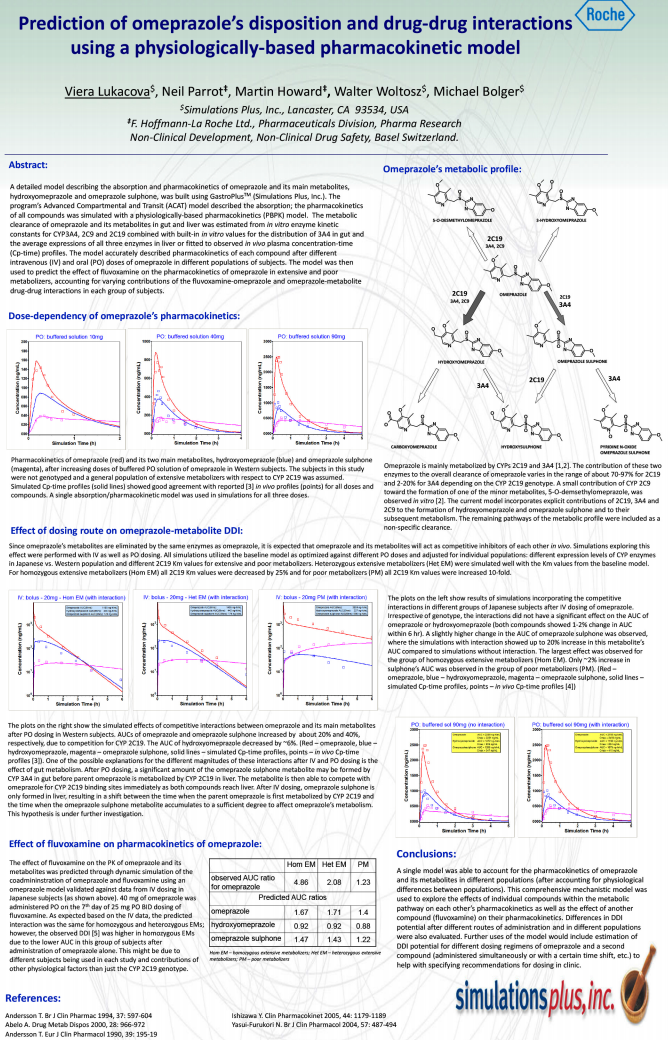New System Enables Users to Operate Computer Simply by Looking at It

Single-Dose And Steady-State Pharmacokinetics Of Moxduo™, A Dual-Opioid Formulation Containing A Fixed Ratio Of Morphine And Oxycodone
Q8003 (MoxDuo™) is the first dual-opioid combination product that has been evaluated in clinical trials. MoxDuo immediate-release capsules were developed for the management of acute moderate to severe…

Mesmerizing Machine
As you study the blue ball machine, it is easy to see how you can be mesmerized by a process that doesn’t actually do anything. See if you can find the part where the ball replaces the worker’s head. Then find the little sign that every now and then flashes NO. It never says yes

Disambiguation
I first came across the word “disambiguation” at a weekend workshop called Ontology in Science. (There is so much that’s just wrong about what I just admitted, but never mind.) I like this word a lot because it makes people ask, “for goodness sake, what are you talking about?” But disambiguation is a serious word, especially in science. It means “to remove ambiguity.” Once you learn that there is a word for getting rid of ambiguity, you begin to realize how much ambiguity there is in the world, especially when people communicate. And it seems to me that the smarter the people and the more complex the topic, the more disambiguation is necessary.

Semi-mechanistic PK/PD Model of the Effect of Odanacatib, a Cathepsin K Inhibitor, on Bone Turnover to Characterize Lumbar Spine Bone Mineral Density in Two Phase II Studies of Postmenopausal Women
Odanacatib (MK-0822), a potent, orally-active inhibitor of cathepsin K, is under clinical development for treatment of postmenopausal osteoporosis. This poster describes base model development of a…

Simulations Plus Reports Second Quarter FY2010 Financial Results
Sustained Growth in Record Second Quarter and Record First Six Months

Simulations Plus Sets Date for 2nd Quarter Fiscal Year 2010 Earnings Release and Conference Call
Conference Call to be on Thursday, April 15, at 12:00 noon EDT

Prediction of Omeprazole’s Disposition and Drug-Drug Interactions Using A Physiologically-Based Pharmacokinetic Model
Download the poster presented at the ADMET Europe 2010 conference on the development of PBPK models and prediction of parent & metabolite DDIs with omeprazole.

Simulations of the Drug-Drug Interaction Between Atomoxetine and Quinidine in Poor and Extensive CYP2D6 Metabolizers
Atomoxetine is indicated for attention-deficit hyperactivity disorder (ADHD) in children, adolescents and adults. It is metabolized to 4- hydroxy-atomoxetine primarily by CYP2D6, which is known to have…

AR inhibitors identified by high-throughput microscopy detection of conformational change and subcellular localization
Signaling via the androgen receptor (AR) plays an important role in human health and disease. All currently available anti-androgens prevent ligand access to the receptor...

Population Pharmacokinetics of Dexmedetomidine (DEX) During Long-Term Continuous Infusion in Critically Ill Patients
Dexmedetomidine (DEX), a selective alpha2-adrenoceptor agonist is approved for sedation. In this study, the population pharmacokinetics (PK) of DEX during long-term (> 24 hours) infusion was…

Quantitative Prediction of Regioselectivity Toward Cytochrome P450/3A4 Using Machine Learning Approaches
In the drug discovery process, it is important to know the properties of both drug candidates and their metabolites.

A Systems Approach to Resource Allocation in an Integrated Research and Development Environment
Typically, at the beginning of a project, the scope is defined along with the timelines and budget. As project team leaders negotiate with functional managers to recruit key team members, including…

Lean Production
I have been reading The Machine That Changed the World: The Story of Lean Production (1), by James Womack and others from MIT’s International Motor Vehicle Program (Content no longer available) research team. This book caused a sensation 20 years ago with its description of the Toyota Production System. The blurb on the book’s back cover says, “The hallmarks of lean production are teamwork, communication, and efficient use of resources. The results are remarkable cars with one-third the defects, built in half the factory space, using half the man-hours.”

Semi-mechanistic PK/PD Model of the Effect of Odanacatib, a Cathepsin K Inhibitor, on Bone Turnover to Characterize Lumbar Spine Bone Mineral Density in Two Phase II Studies of Postmenopausal Women
Odanacatib (MK-0822), a potent, orally-active inhibitor of cathepsin K, is under clinical development for treatment of postmenopausal osteoporosis. This poster describes base model development of a...

Simulations Plus Launches Biorelevant Solubility Database
Proprietary Data Generated by Company Provides Unique Insight Needed By Drug Developers

Simulations Plus Announces Renewed Share Repurchase Program
Up to One Million Shares over 12 Months Authorized by Board of Directors

Intro to Pharma of the Future?
Why is it so hard to incorporate modeling and simulation into drug development? Why do these powerful tools so often fail to provide satisfactory outcomes?
